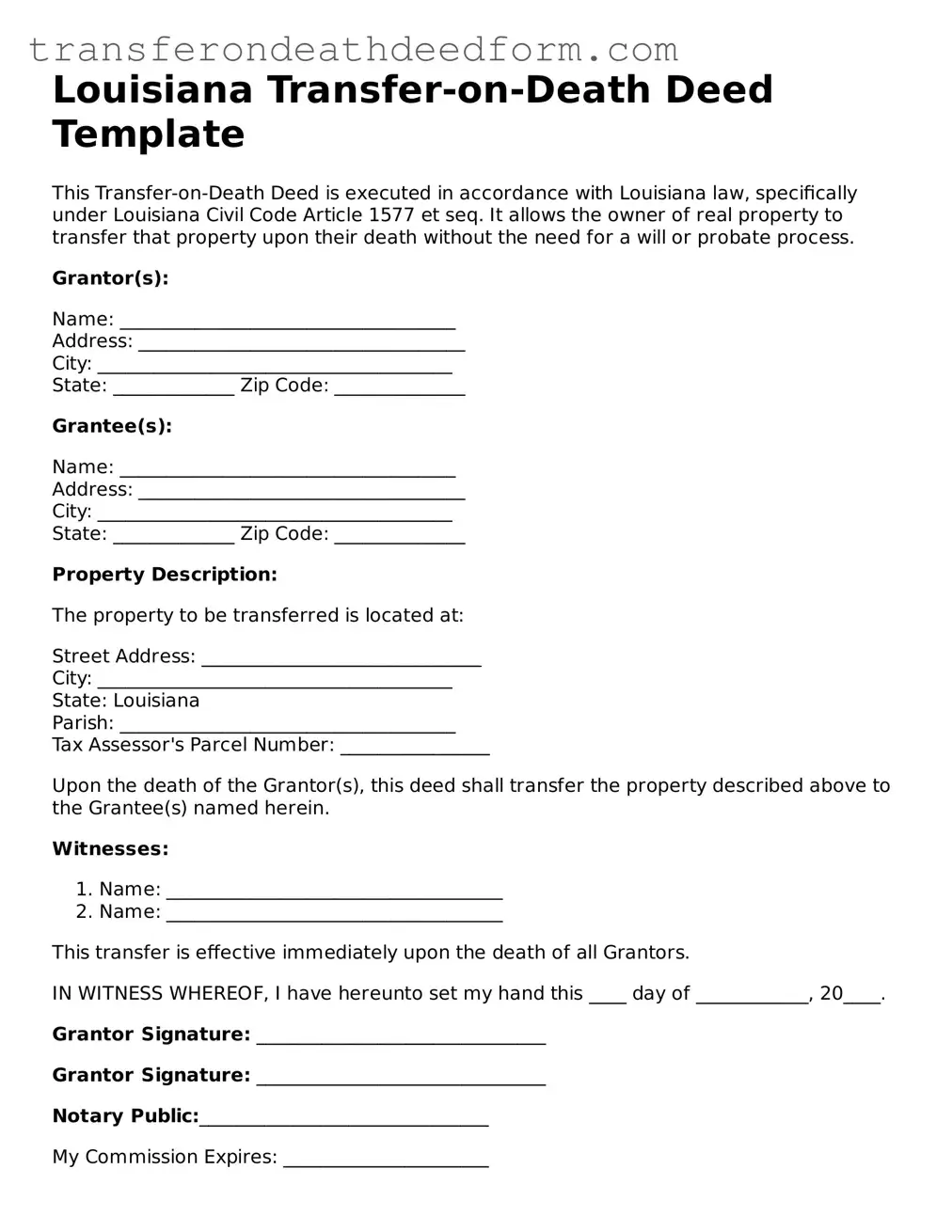Louisiana Transfer-on-Death Deed Template
This Transfer-on-Death Deed is executed in accordance with Louisiana law, specifically under Louisiana Civil Code Article 1577 et seq. It allows the owner of real property to transfer that property upon their death without the need for a will or probate process.
Grantor(s):
Name: ____________________________________
Address: ___________________________________
City: ______________________________________
State: _____________ Zip Code: ______________
Grantee(s):
Name: ____________________________________
Address: ___________________________________
City: ______________________________________
State: _____________ Zip Code: ______________
Property Description:
The property to be transferred is located at:
Street Address: ______________________________
City: ______________________________________
State: Louisiana
Parish: ____________________________________
Tax Assessor's Parcel Number: ________________
Upon the death of the Grantor(s), this deed shall transfer the property described above to the Grantee(s) named herein.
Witnesses:
- Name: ____________________________________
- Name: ____________________________________
This transfer is effective immediately upon the death of all Grantors.
IN WITNESS WHEREOF, I have hereunto set my hand this ____ day of ____________, 20____.
Grantor Signature: _______________________________
Grantor Signature: _______________________________
Notary Public:_______________________________
My Commission Expires: ______________________
